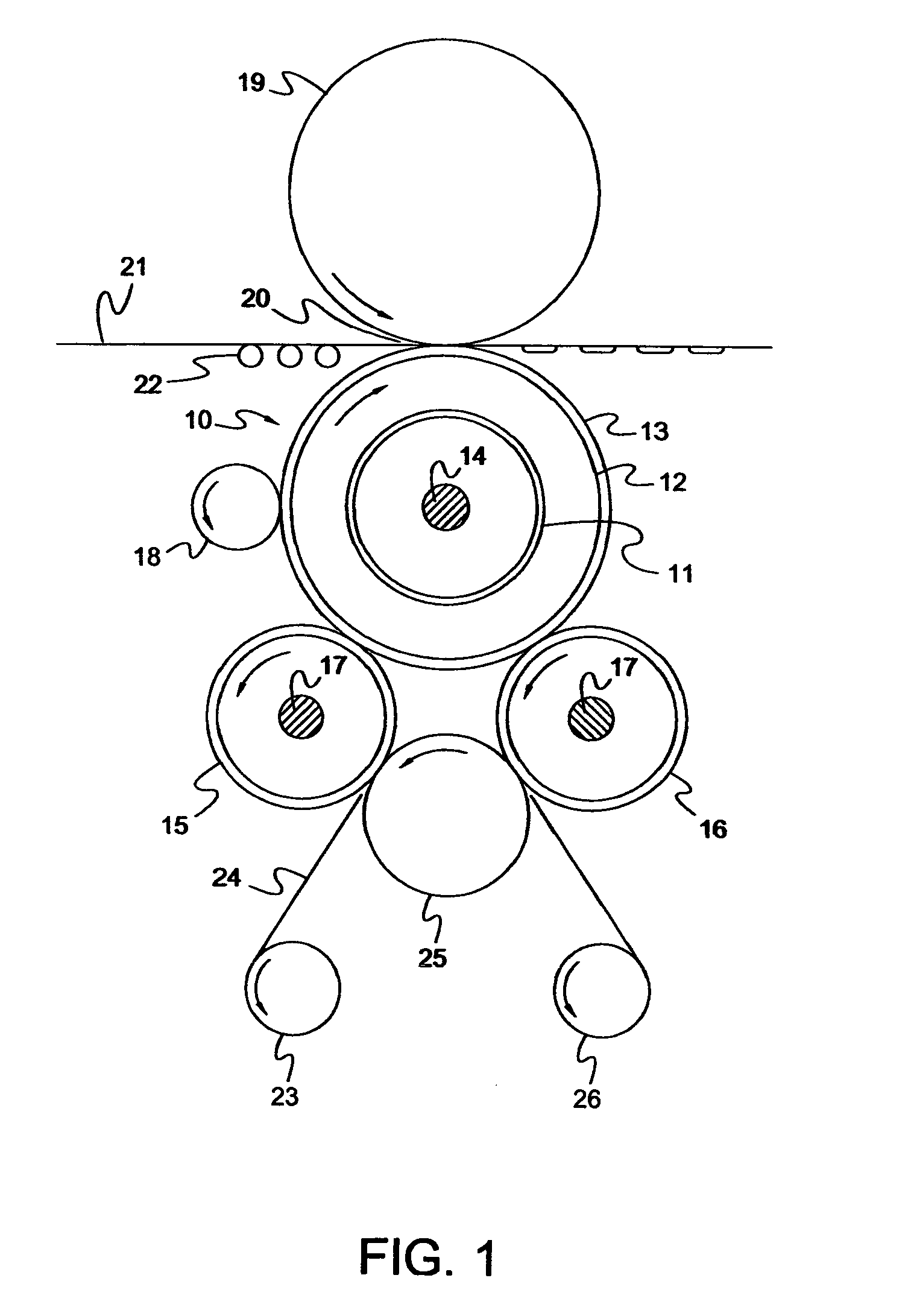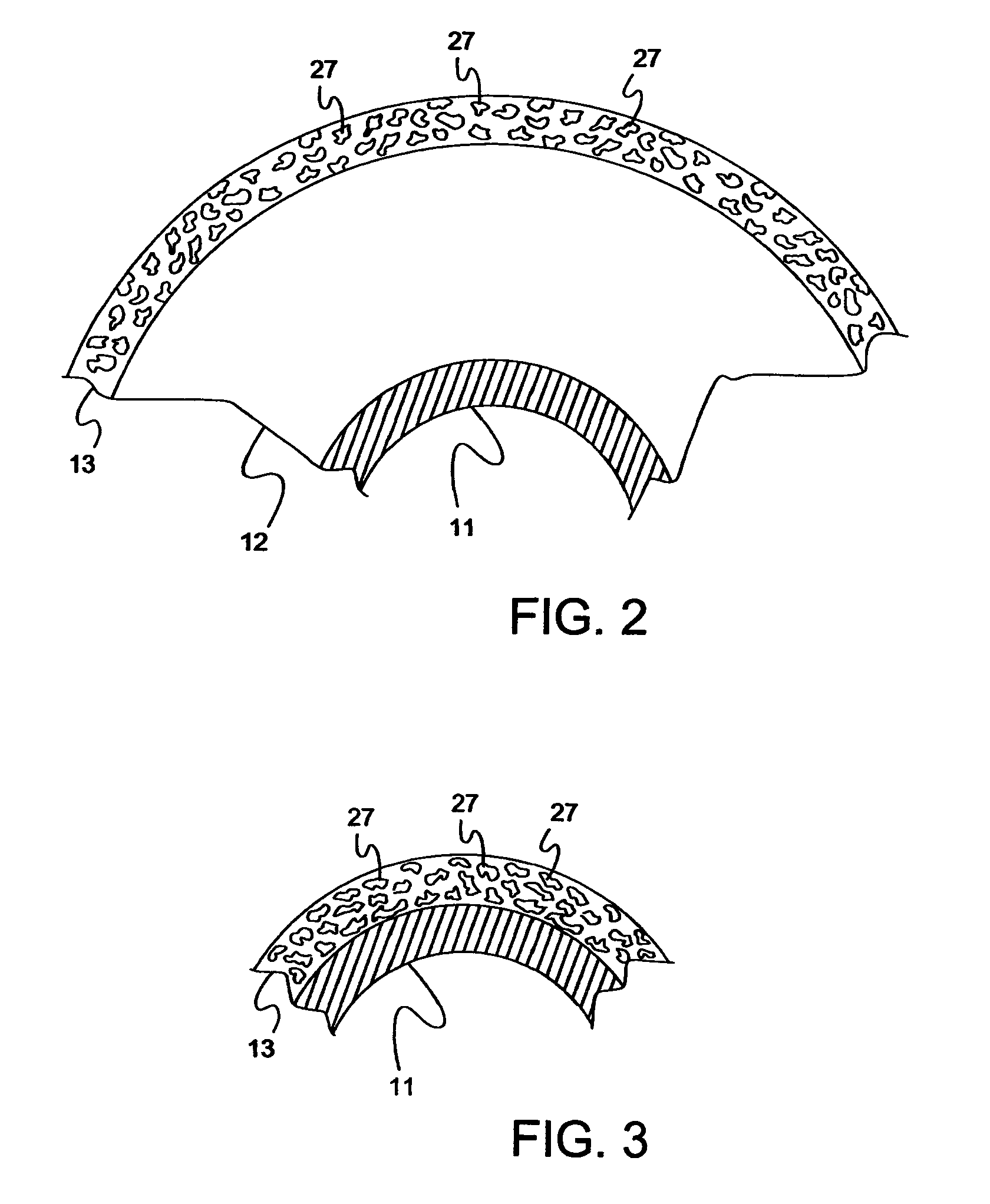Process for electrostatographic reproduction
a technology of electrostatographic reproduction and electrostatographic imaging, applied in the direction of electrographic process apparatus, instruments, developers, etc., can solve the problems of low gloss, subtle variations in gloss, and hidden defects, and achieve low surface energy, low gloss, and high desirable low gloss images
- Summary
- Abstract
- Description
- Claims
- Application Information
AI Technical Summary
Benefits of technology
Problems solved by technology
Method used
Image
Examples
example 1
[0263]A fuser roller was prepared in substantially the same manner as that of Comparative Example 1, except for the following differences. Specifically, 40 grams of Composition 3 were employed instead of 80 grams of Composition 1. Further, 150 grams of MEK, 1.8 grams of PS513, and 0.4 grams of VITON™ Curative No. 50 were employed, instead of the amounts of these materials as specified in Example 1. Yet additionally, in place of adding the PS513 and VITON™ Curative No. 50 30 minutes before ring coating, and instead of adding the VITON™ Curative No. 50 to the full amount of the solution previously prepared, the following sequence was employed, with the amounts as indicated: the 1.8 grams of PS513 were added to the solution of Composition 3 in MEK; 24 hours after this addition of PS513, 17.7 grams of SFR-100 were added; 7 hours after addition of the SFR-100, a 97 grams portion of the solution was taken, and the VITON™ Curative No. 50 was added to this portion; and the ring coating was ...
example 2
[0264]A fuser roller was prepared in substantially the same manner as that of Example 1, except the amount of VITON™ Curative No. 50 employed was 1.26 grams, and that the amount of solution taken after addition of the SFR-100 was 98 grams, with the indicated VITON™ Curative No. 50 being added to this portion. The thickness of the fluoroelastomer coating was measured by the same manner as in Comparative Example 1, and determined to be 3.74 mils thick.
example 3
[0265]A fuser roller was prepared in substantially the same manner as that of Example 1, except for the following differences. Specifically, 65 grams of Composition 4 were employed in place of 40 grams of Composition 3, and 155 grams of MEK, 2.123 grams of PS513, 2.95 grams of VITON™ Curative No. 50, and 21.23 grams of SFR100 were employed in place of the amounts described in Example 1. Additionally, after addition of the SFR-100, the VITON™ Curative No. 50 was added to the entire amount of solution. The thickness of the fluoroelastomer coating was measured by the same manner as in Comparative Example 1, and determined to be 4.64 mils thick.
PUM
 Login to View More
Login to View More Abstract
Description
Claims
Application Information
 Login to View More
Login to View More - R&D
- Intellectual Property
- Life Sciences
- Materials
- Tech Scout
- Unparalleled Data Quality
- Higher Quality Content
- 60% Fewer Hallucinations
Browse by: Latest US Patents, China's latest patents, Technical Efficacy Thesaurus, Application Domain, Technology Topic, Popular Technical Reports.
© 2025 PatSnap. All rights reserved.Legal|Privacy policy|Modern Slavery Act Transparency Statement|Sitemap|About US| Contact US: help@patsnap.com



